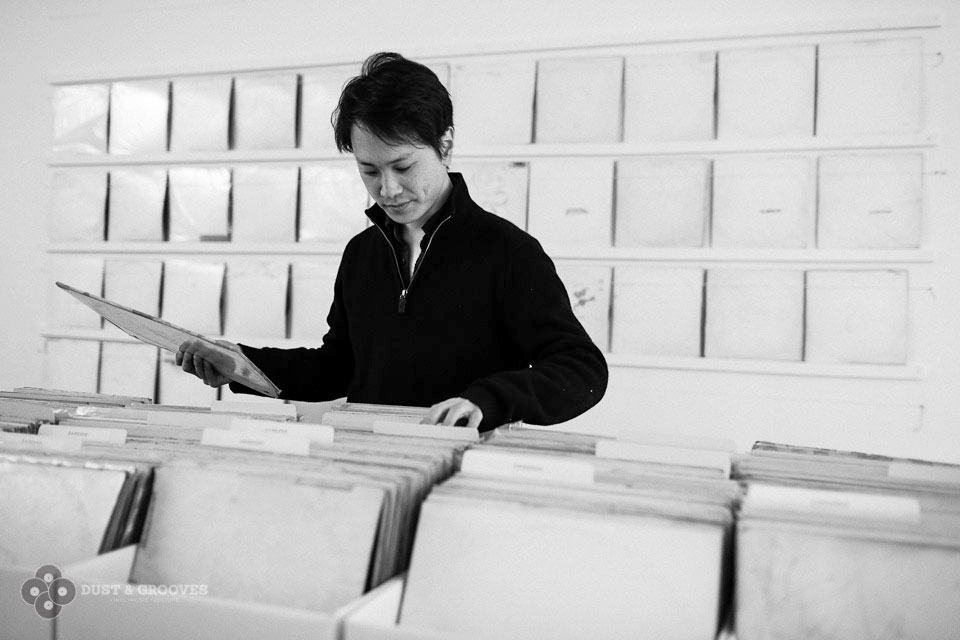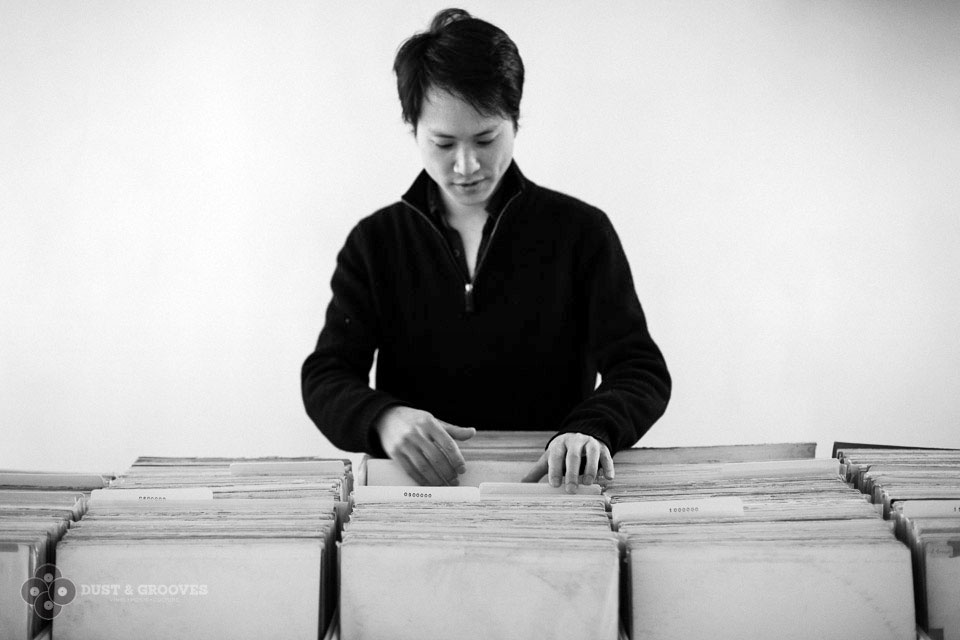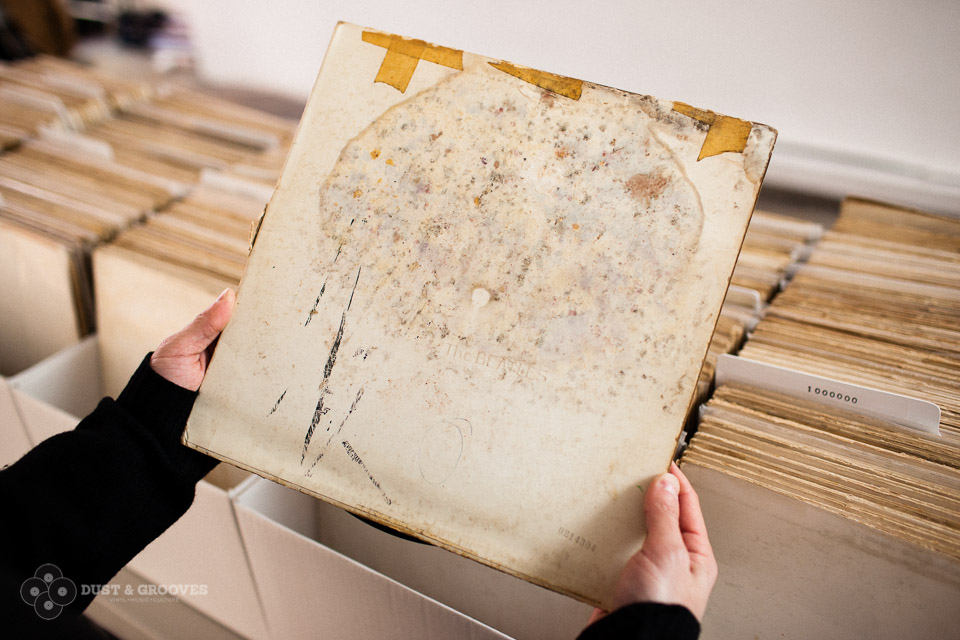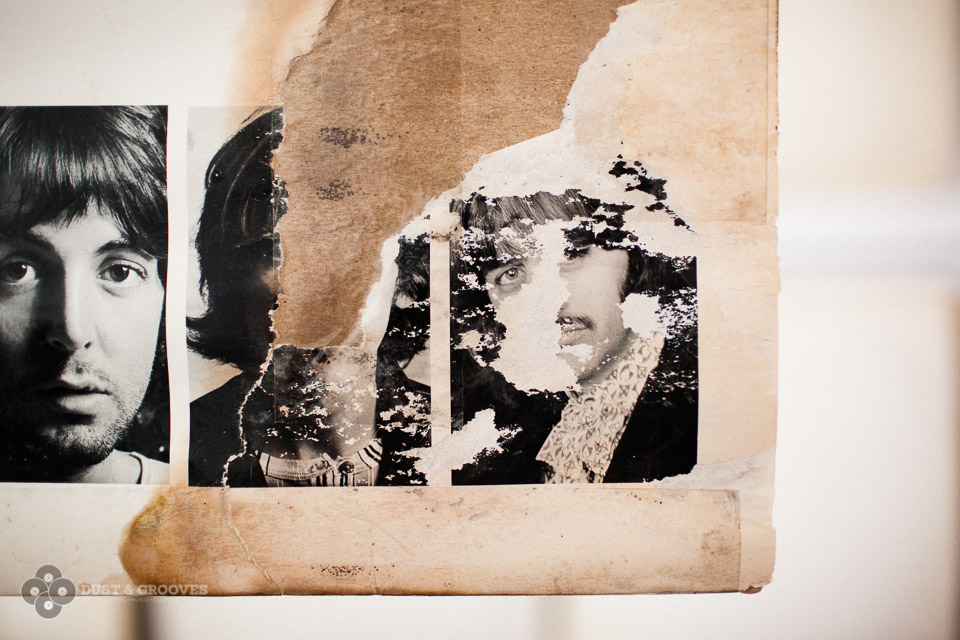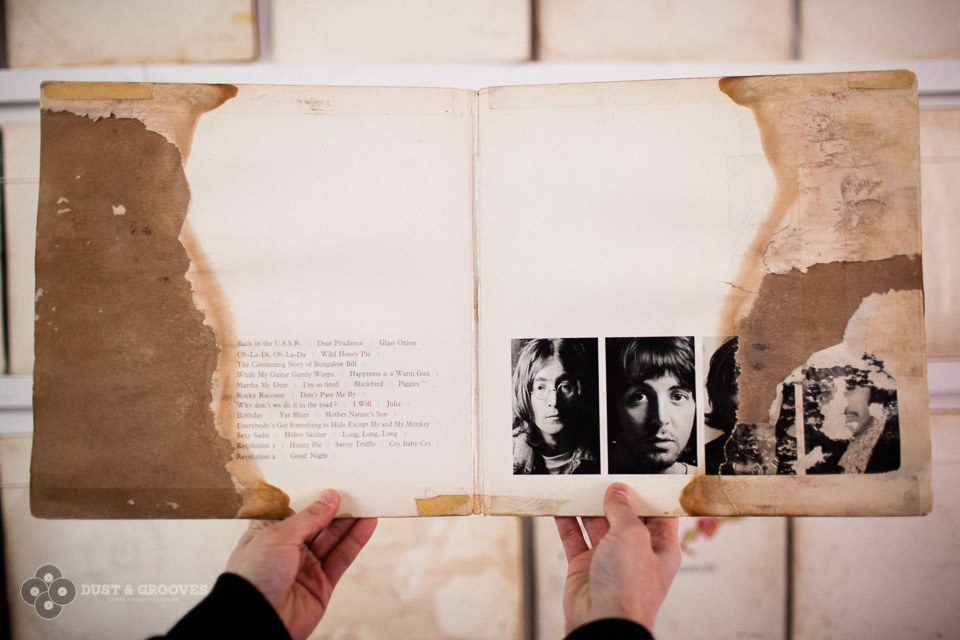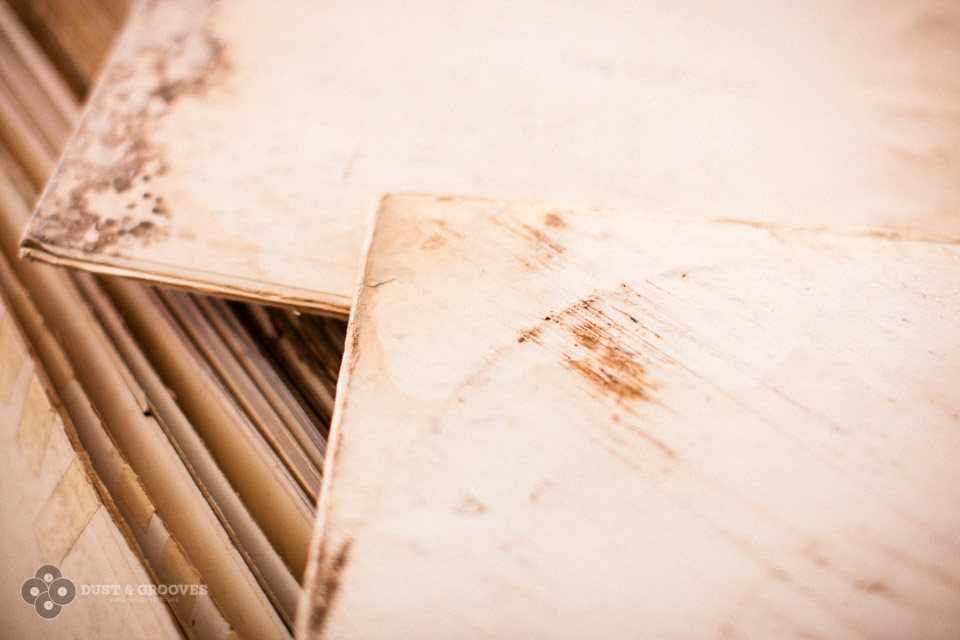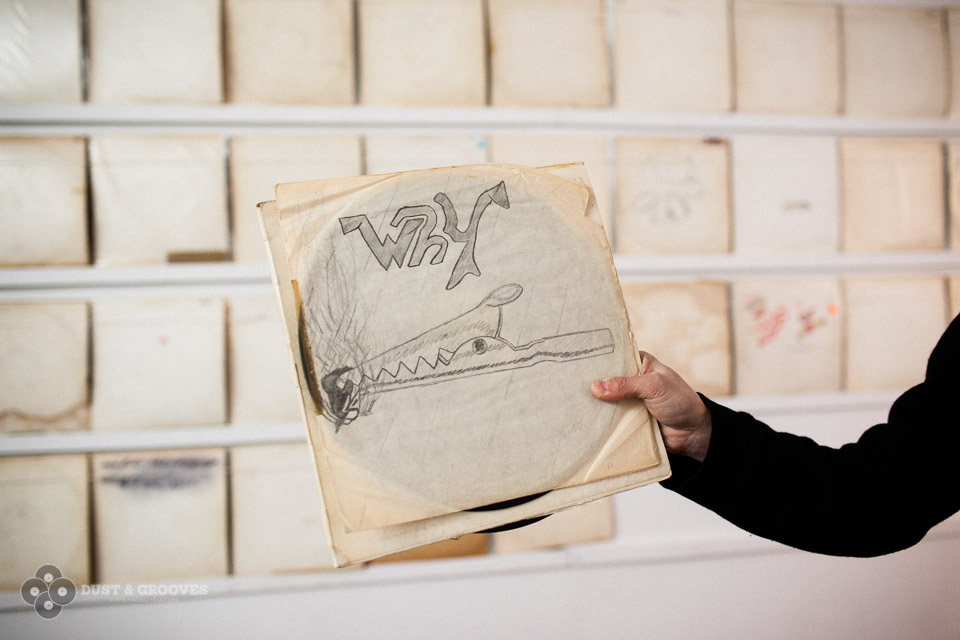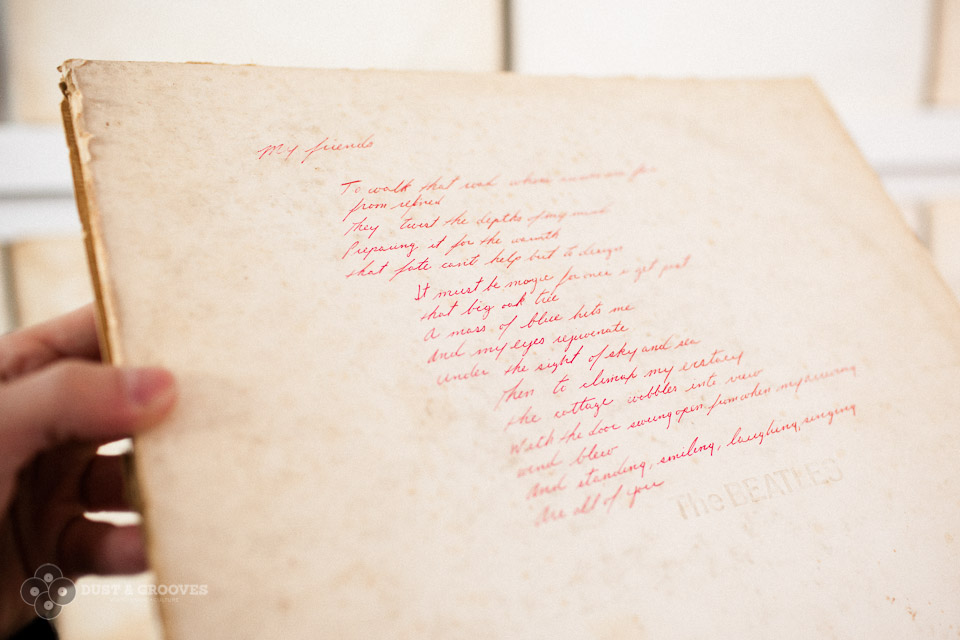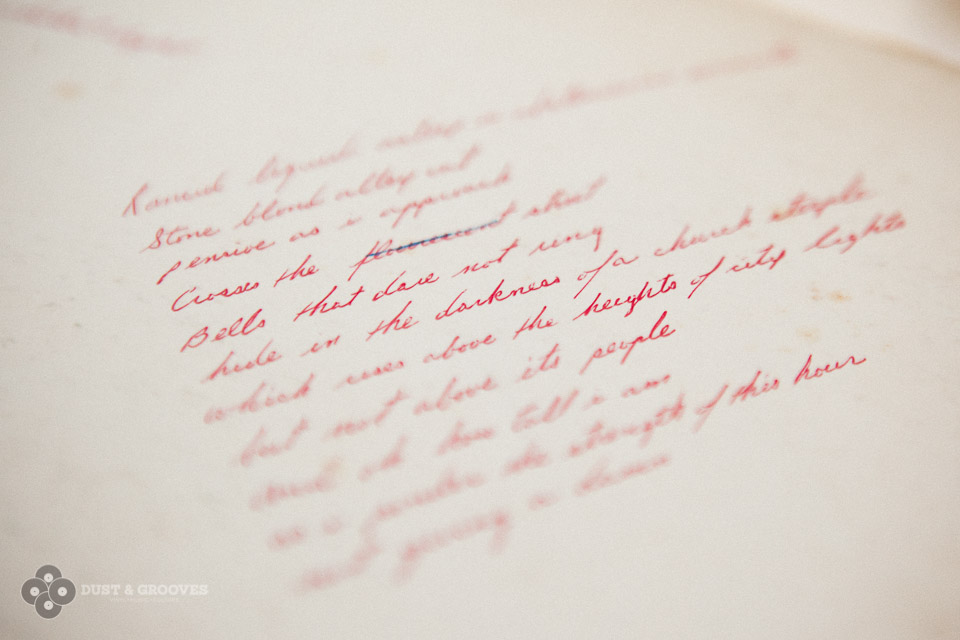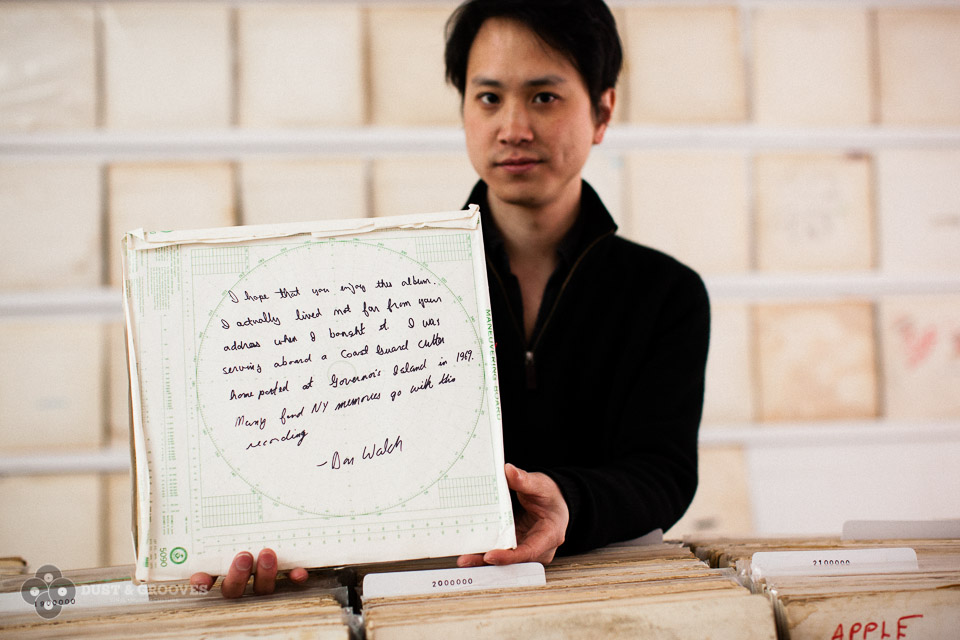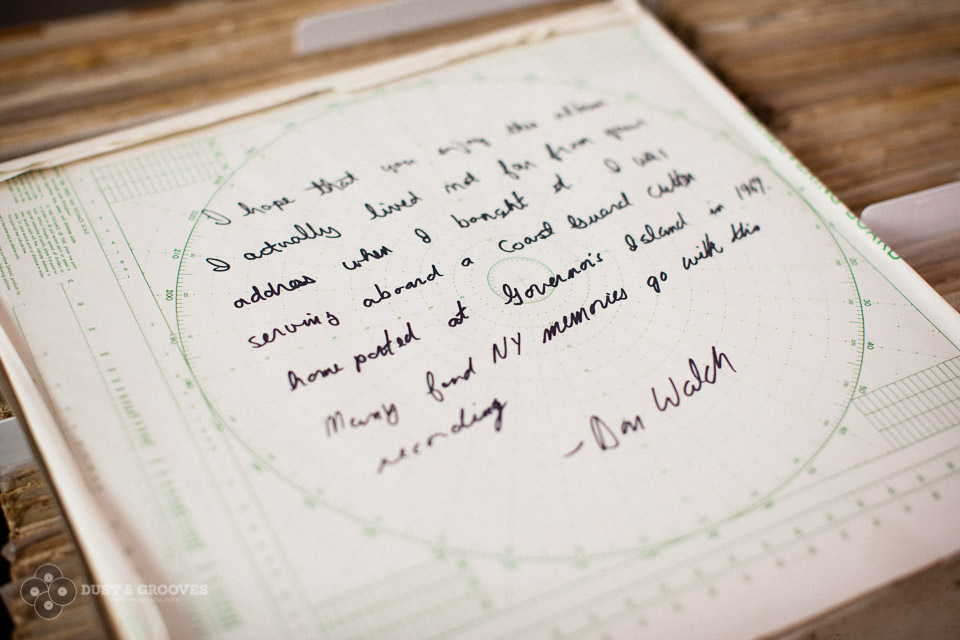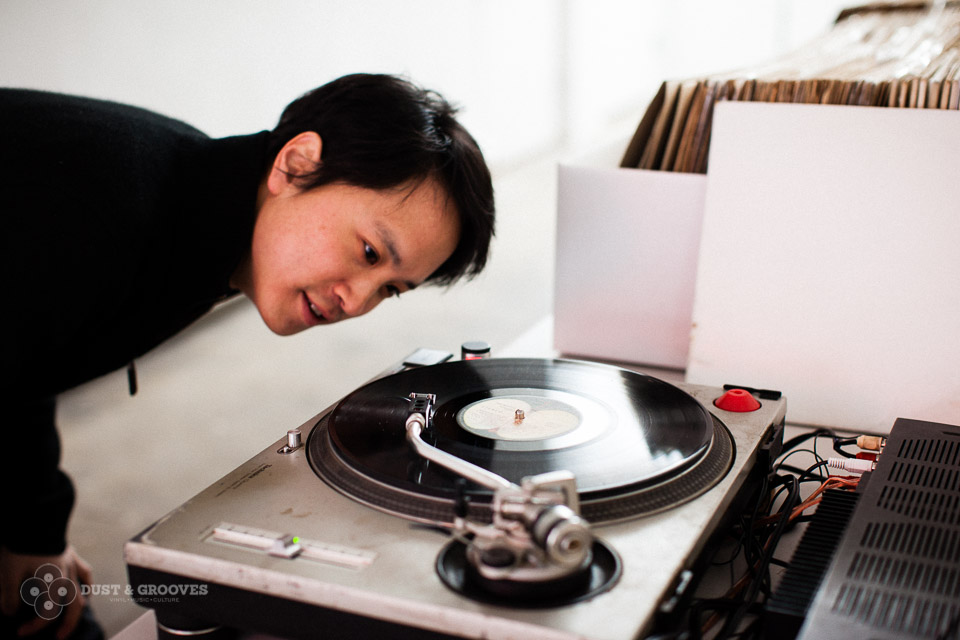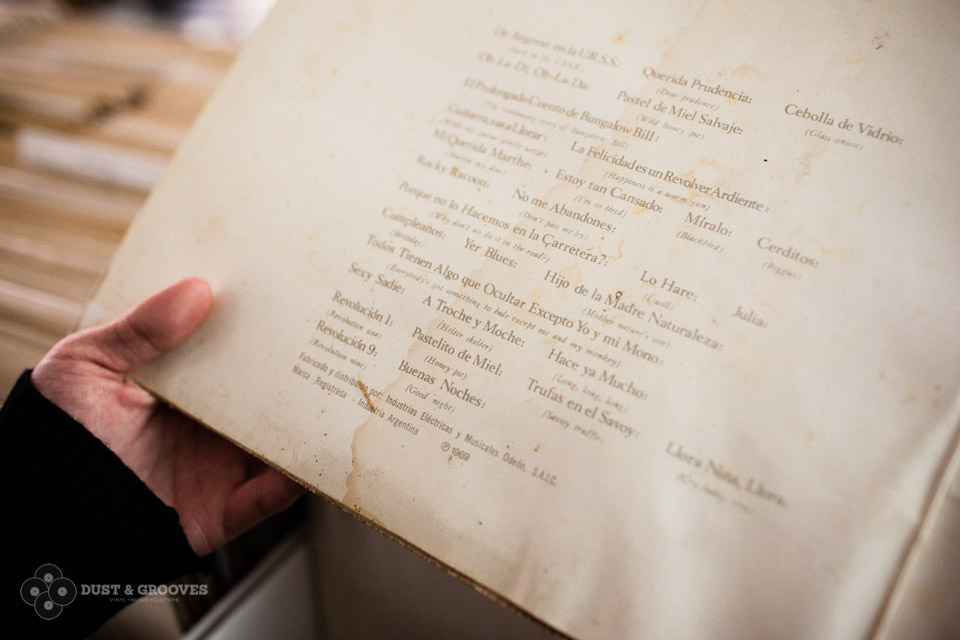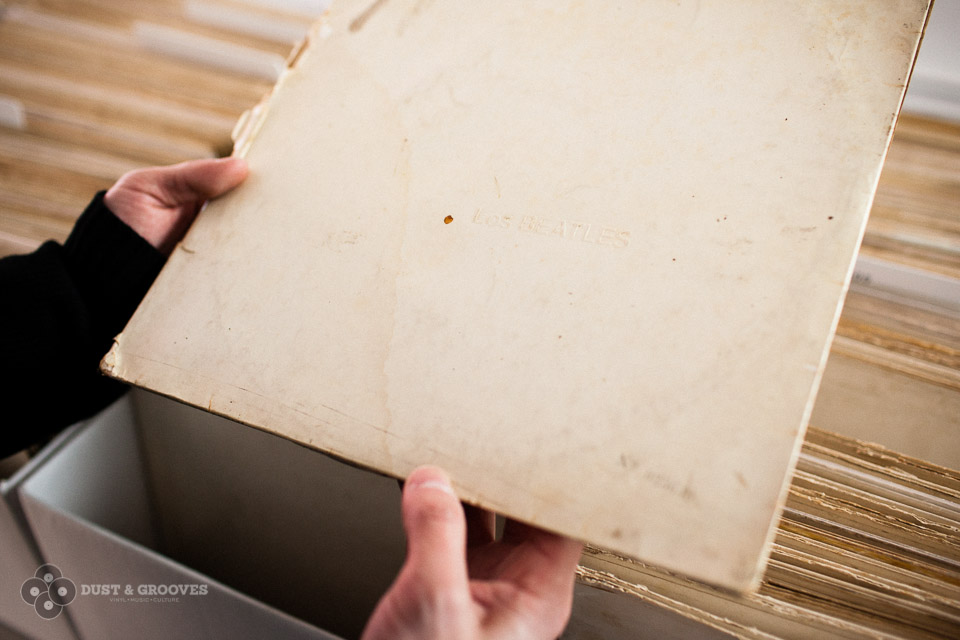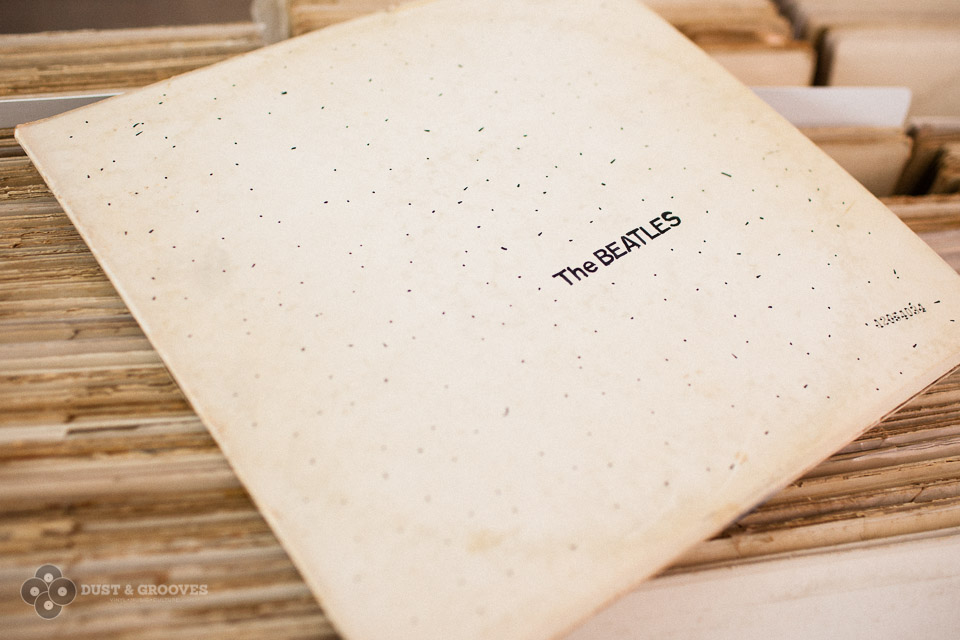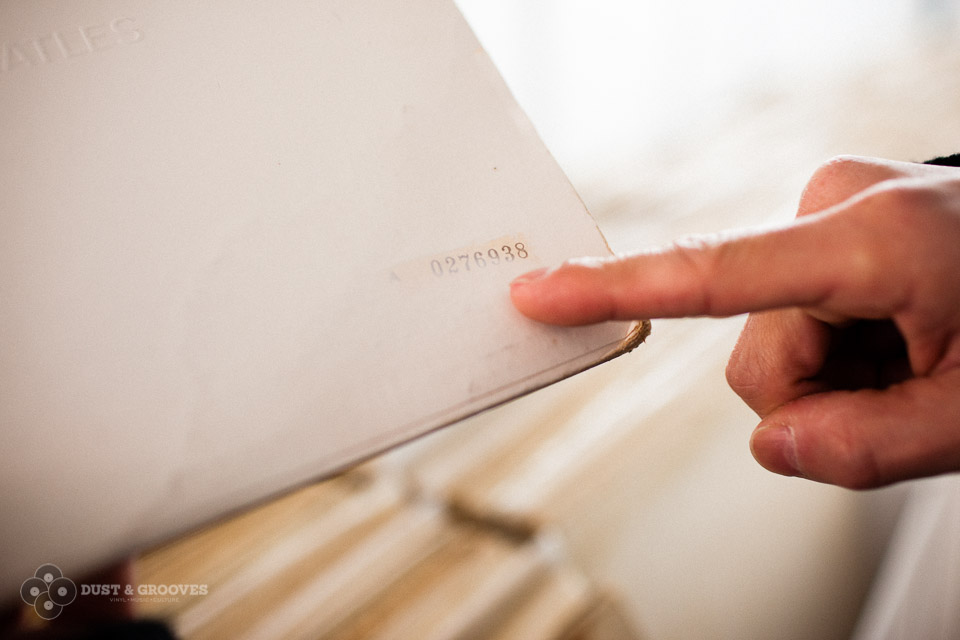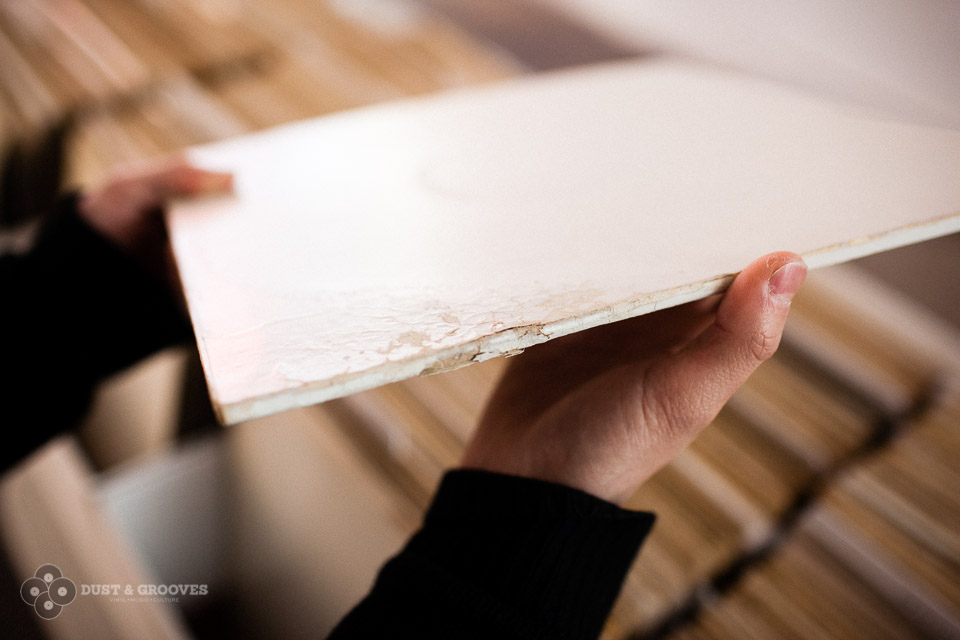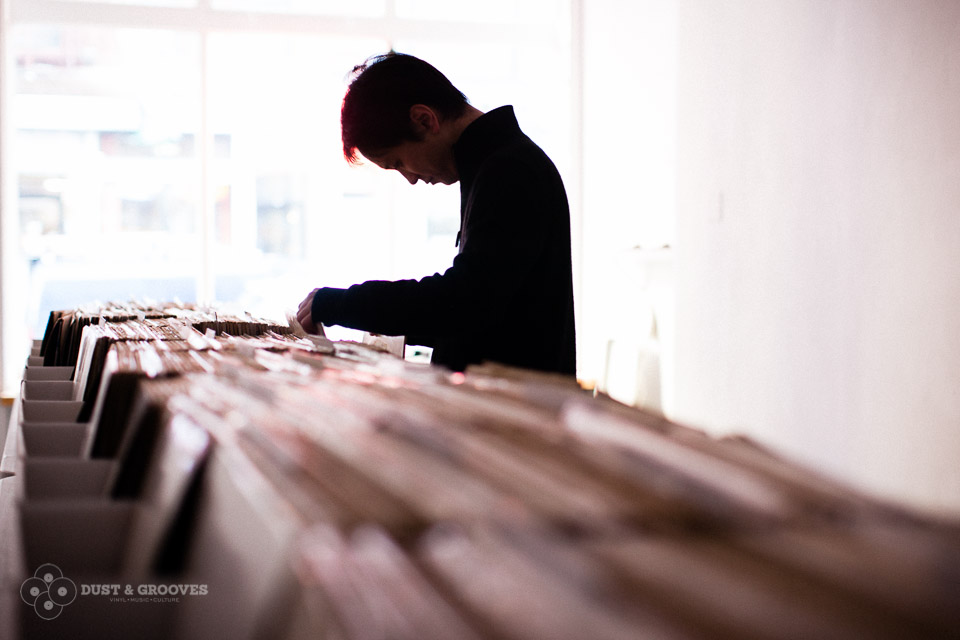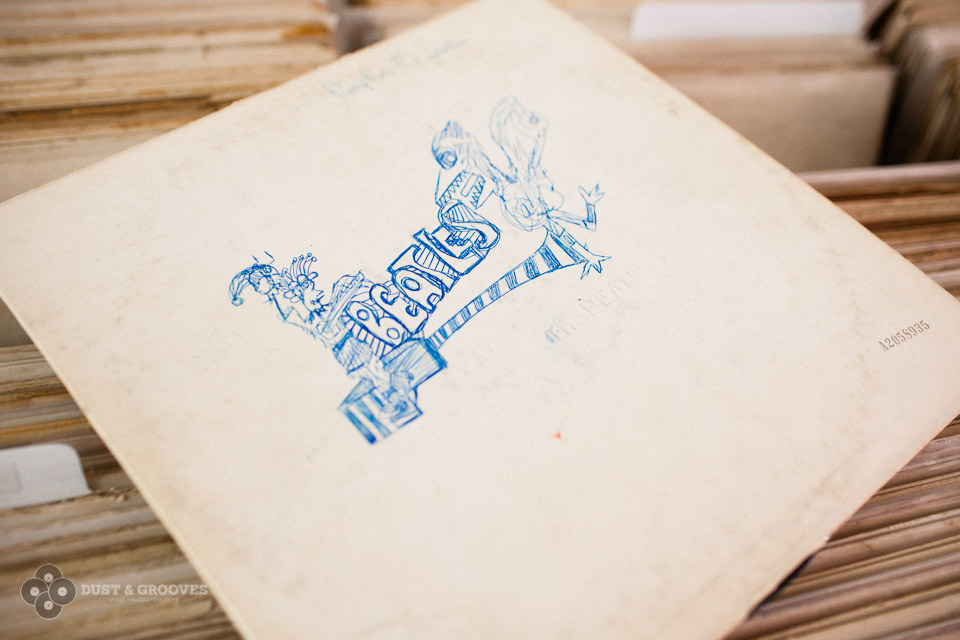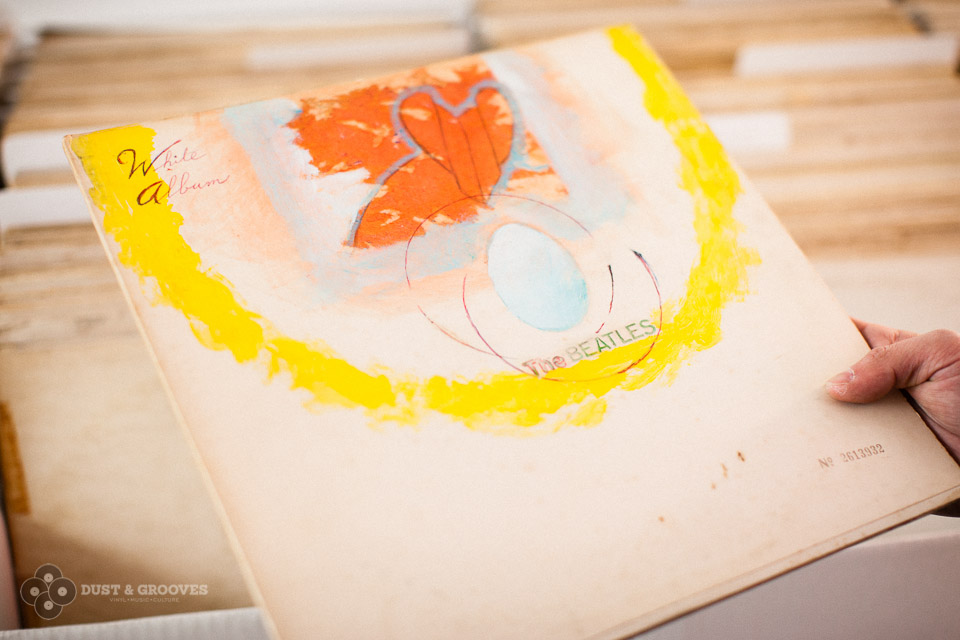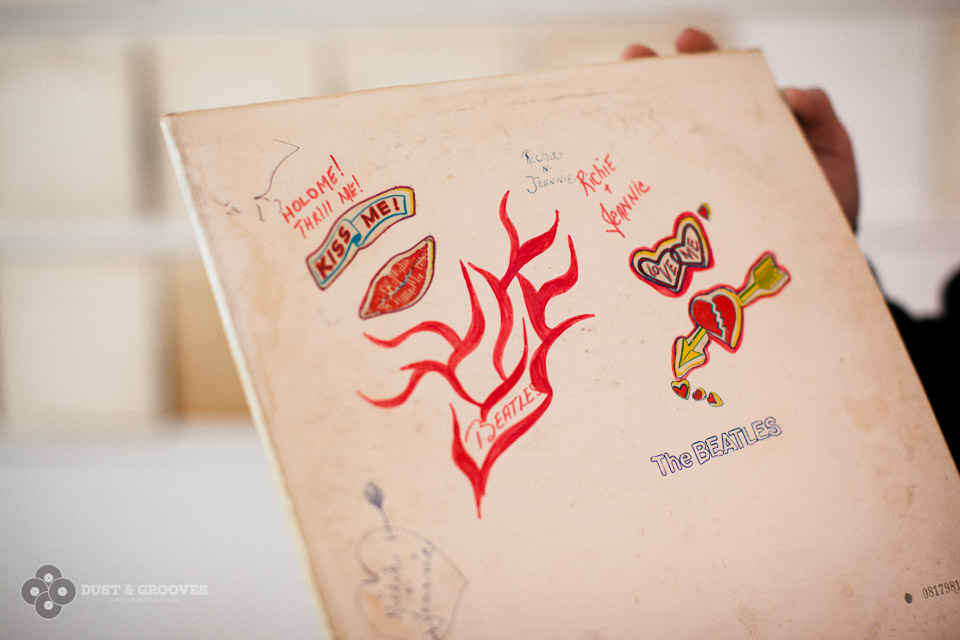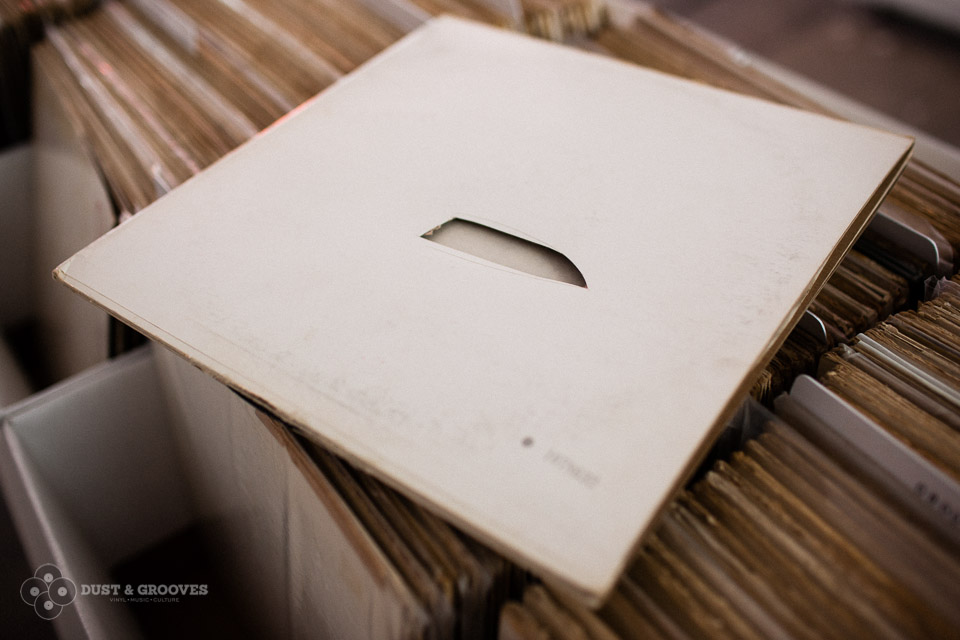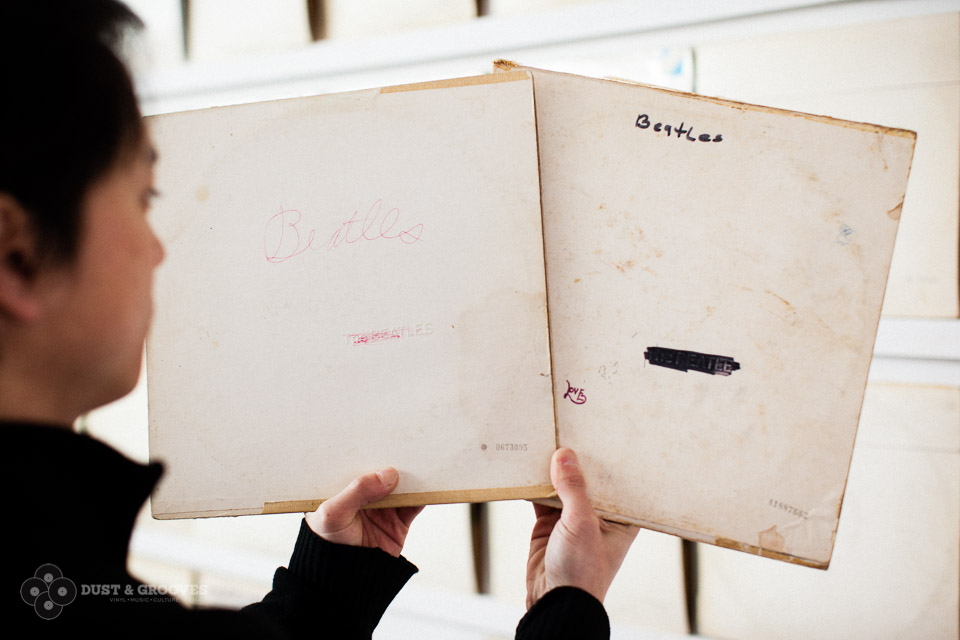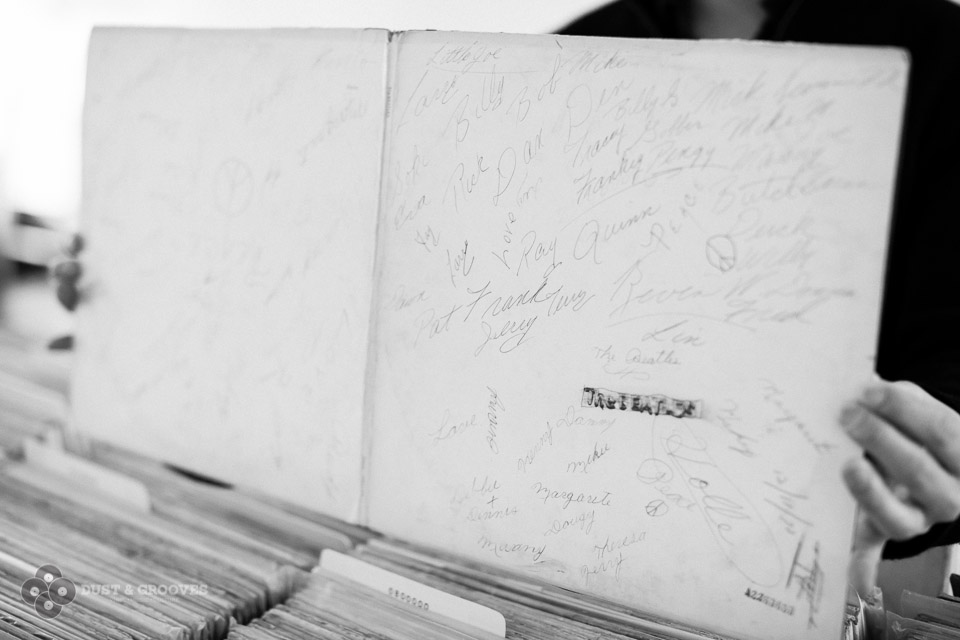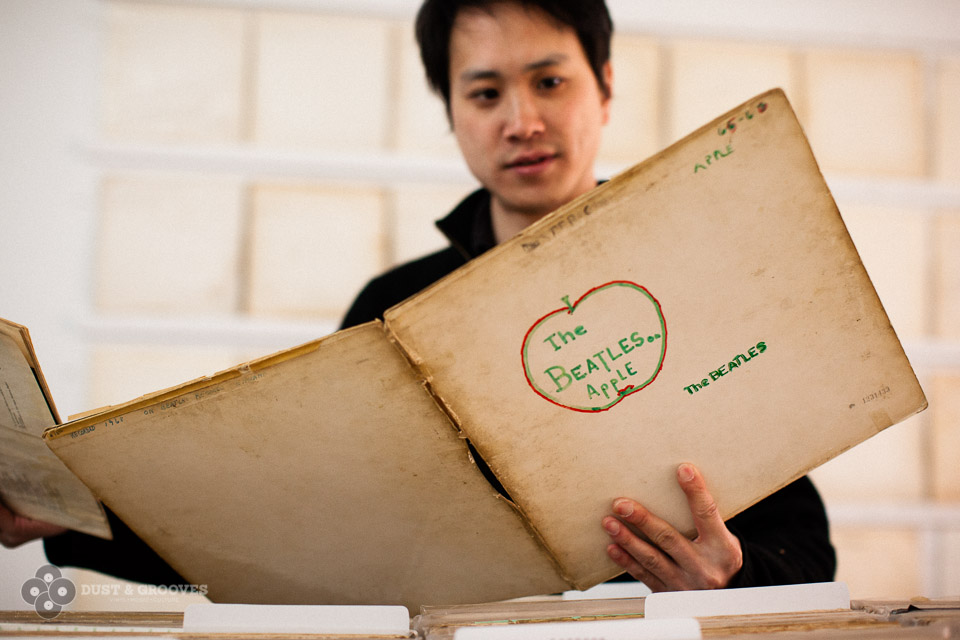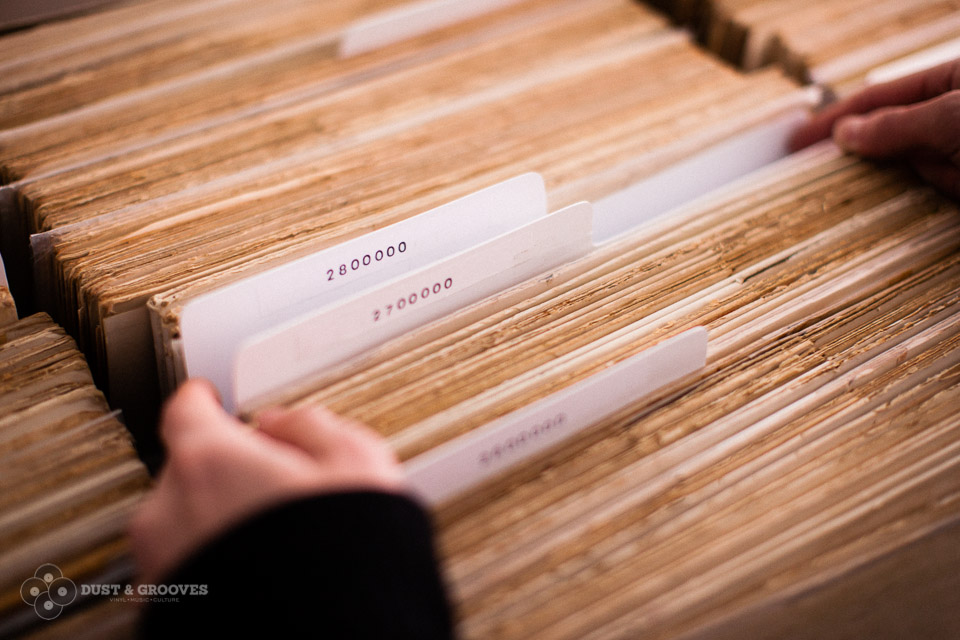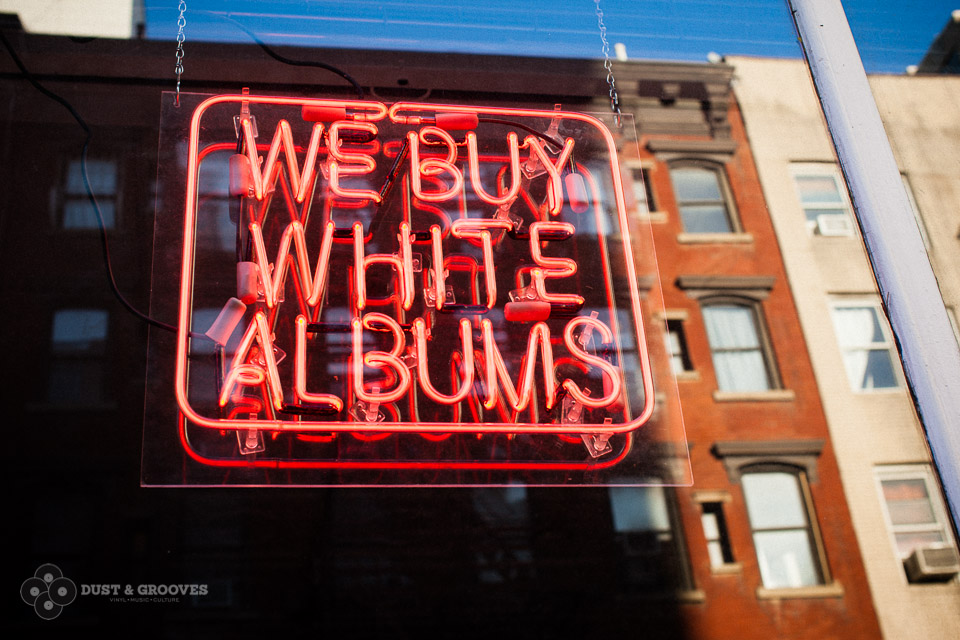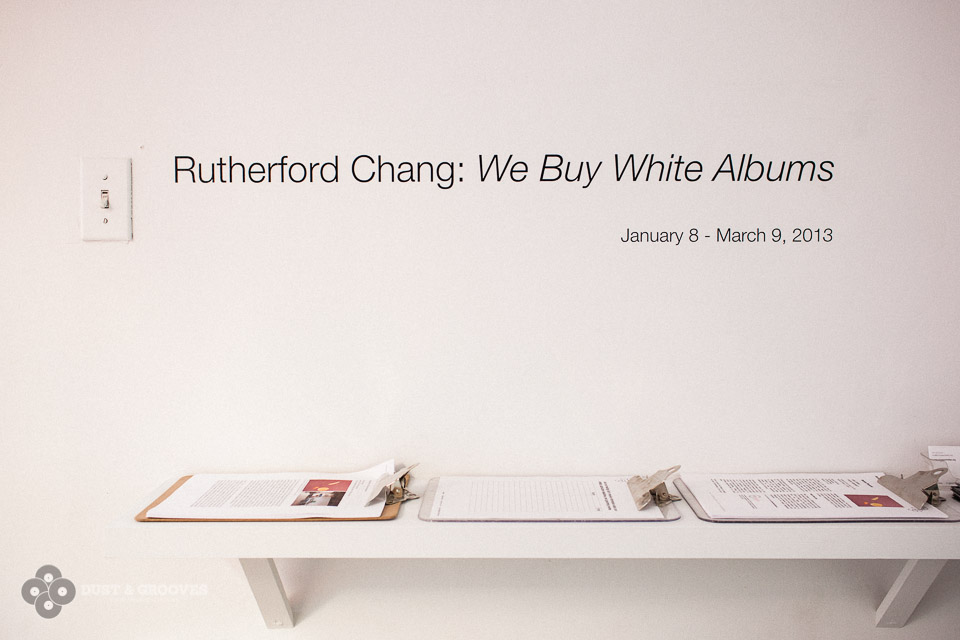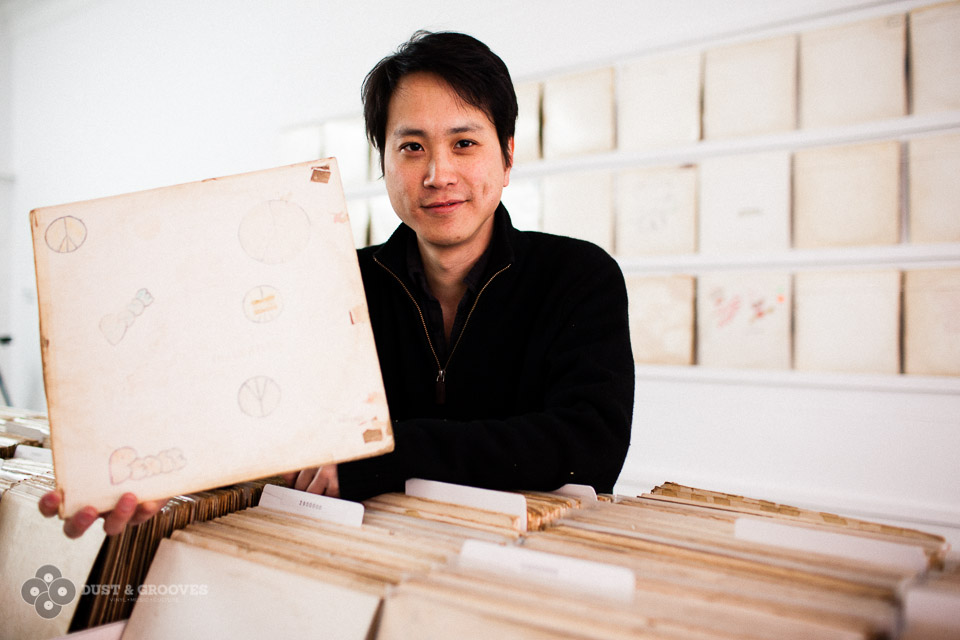We Buy White Albums
By Eilon Paz | 15 February 2013 | dustandgrooves.com
Rutherford Chang has a unique vinyl collection. He only collects first pressings of the Beatles White Album
Rutherford Chang is an American-Taiwaneese artist living in New York & Shanghai.
Photographed for Dust & Grooves by Eilon Paz
I met Chang recently at the Recess Gallery in NYC where he is exhibiting his collection. In the show, We Buy White Albums, he has created a record store that stocks only copies of the White Album. But rather than selling the albums, he buys more from anyone willing to part with an original pressing in any condition.
Q: Tell me a bit about yourself. who are you? where did you grow up?
A: I’m an artist living in New York. I grew up in California.
Q: Did you grow up in a house of Beatles fans? When did you first hear about the Beatles? and about the white album?
A: My parents are from Taiwan and didn’t listen to the Beatles, so I didn’t grow up with the music. I bought my first White Album at a garage sale in Palo Alto for $1 when I was 15 years old.
Q: So how did you get familiar with the Beatles?
A: They are the biggest band.
Q: Tell me about your current exhibition We Buy White Albums.
A: My collection of White Albums is on display at Recess, a storefront art space in SoHo. It’s set up like a record store with the albums arranged in bins by serial number, and visitors are invited to browse and listen to the records. Except, rather than sell the albums, I am buying more. I currently have 693 copies.
Q: Are you a vinyl collector?
A: Yes, I collect White Albums.
Q: Do you collect anything other than that?
A: I own some vinyl and occasionally buy other albums, but nothing in multiples like the White Album.
Q: Why just White Album? why not Abbey road? or Rubber Soul?
A: The White Album has the best cover. I have a few copies of Abbey Road and Rubber Soul, but I keep those in my “junk bin”.
Q: Why do you find it so great? It’s a white, blank cover. Are you a minimalist?
A: I’m most interested in the albums as objects and observing how they have aged. So for me, a Beatles album with an all-white cover is perfect.
Q: Do you care about the album’s condition?
A: I collect numbered copies of the White Album in any condition. In fact I often find the “poorer” condition albums more interesting.
Q: Are you interested in the personal history behind each album? Who were the owners?
A: I am, but often this information is not available, so it becomes an imagined history based on the condition of the albums.
People used to have good handwriting.
A note from the seller told about when he bought the album while serving in the Coast Guard in 1969.
Q: Are you collecting as an artist or as a music fan?
A: I’m collecting them as cultural artifacts.
Q: Do you listen to vinyl records on a regular basis?
A: I listen to the White Album every day.
Q: You play it every day, non- stop. What are you trying to achieve?
A: While at Recess, I’m listening to and recording the albums and documenting the covers. The albums I listen to get put up on the “staff picks” wall. At the end of the exhibition, I will press a new double-LP made from all the recordings layered upon each other. It will be like playing a few hundred copies of the White Album at once, each scratched and warped in its own way.
Q: I’m trying to figure out if you’re a vinyl collector, or a music aficionado or an artist making an art piece with an object that happens to be a Beatles White album? Can you expand on that?
A: I’m making an art piece using White Albums as material. But the process also very much involves collecting vinyl and listening to music.
Q: Do you buy records other than the White Album for your art project?
A: I occasionally buy other records, but I don’t consider these part of my collection. I “collect” only White Albums.
Q: How did you come up with the idea of collecting first edition white albums? and why just first editions?
A: I got into collecting multiple White Albums because every copy tells a story. Each one has aged uniquely over the course of the last half-decade. The pressings from 1968 were numbered, implying that it is a limited edition, although one running in excess of 3 million.
Los Beatles. Latin edition.
One more artistic interpretation.
Q: Is there any connection to the vinyl resurgence that is going on these days?
A: I think the resurgence of vinyl collecting is a reaction to the absence of physicality in digital music. Each vinyl record is very much an individual object that matures over time, which is especially apparent with the White Album collection, comprised of identical yet unique multiples.
Q: Why only numbered ones? They could be a bit pricey, don’t they?
A: The serial numbers make them part of a set. There are enough numbered copies that I still manage to acquire them at reasonable prices.
Q: What happened here?
A: This album is extra white because it was painted white by its owner.
Q: What was the most and the least you had paid for an album?
A: The most I’ve paid was $20. The least I’ve paid was $1.
Q: How do you get them?
A: I’ve been collecting White Albums for 7 years, mostly on the Internet, and am now also buying copies brought to me by customers at “We Buy White Albums.”
Q: Do you ever receive albums for free? For the sake of art?
A: I will happily accept donations.
Q: How far will you go to purchase them? Is there an amount you won’t pay?
A: So far, I’ve only been buying “cheaper” copies because I find these as interesting if not more than the expensive ones.
Q: Have you had any interesting encounters with sellers? any funny or weird stories?
A: I’ve come across some good eBay listings. For example A2058935 was described as, “someone must have been smoking dope while drawing on the front cover both records have scratches but play ok.” Visitors to “We Buy White Albums” frequently offer their White Album stories as well. One told me that when he was a kid he would go over to his friend’s house to listen to the album. Except his friend’s copy had “Sexy Sadie” and “Happiness is a Warm Gun” scratched out because he was afraid that if his parents heard these songs they would confiscate the album.
Q: It seems like the white album is a popular album for listener’s self interpretations. Like a clean white canvas. So many of your albums are re-imagined, written on, or abused. Have you noticed that?
A: The covers have certainly been well loved/abused! The white canvases have been personalized with everything from scribbled names to elaborate paintings. I keep wondering if Richard Hamilton foresaw that all this would happen to the covers when he designed it back in 1968.
Someone was popular.
Q: 2,700,000 to 2,800,000 you have nothing. what happened there?
A: I’m really not sure, but guessing that maybe these numbers weren’t printed. Or maybe, though statistically unlikely, I just haven’t come across any in this range.
Q: I’m really curious now. Aren’t you?
A: Of course I am. I want to buy them.
Q: I’m sure you can find some answers out there. Maybe talk to some other Beatles collectors?
A: None of the Beatles freaks I’ve talked to so far know about this. From inspecting the markings on the end-grooves, I see that all my albums in the 2,600,000’s were manufactured in the Capitol Records Los Angeles factory, whereas the albums in the 2,800,000’s were all from the Scranton factory. So maybe some numbers were lost in-between.
Q: What will you do with the records once the show is over?
A: The collection has been ongoing and will continue after the show. There are a lot more White Albums out there!
We Buy White Albums | January 8 – March 9, 2013 | Recess, 41 Grand Street, New York
Eilon Paz | dustandgrooves.com
17 December 2006




